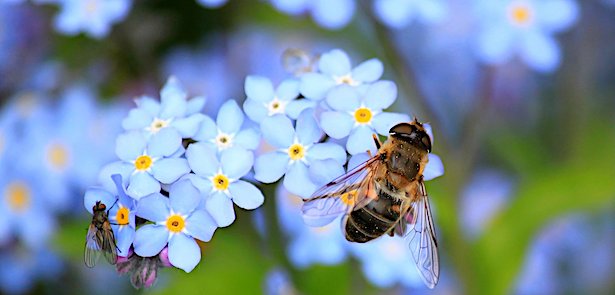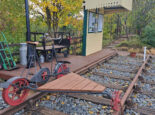Creating B-Lines for pollinators

Calling all Peterborough residents! Can you help create mini wildflower meadows across the city to benefit bees and insects?
PECT is looking to create a network of wildflower pathways, linking together existing habitats. The charity is working with local residents, landowners, community groups, schools, and businesses to create ‘pit-stops’ for pollinators as they move across the landscape.
The aim is to enhance the natural environment of the city, improving its biodiversity and creating beautiful pollinator-friendly areas. Increasing the abundance of wildflowers is not just beneficial for biodiversity, it is also essential to stop the decline of native pollinators.
Buglife, the leading organisation in Europe devoted to the conservation of all invertebrates, has mapped these B-Lines across the UK. Using this map to identify areas in Peterborough where there are gaps, PECT is creating a network of wildlife pathways and green spaces.
“Peterborough has the potential to become the very first section of the B-Line to be filled in enough to enable effective pollinator mobility,” says PECT’s Tony Cook. “Through transforming public parks, as well as smaller communal urban spaces and household gardens, we are forming a joined-up and cohesive approach to conservation.”
Why is it needed?
Peterborough’s B-Lines aims to reverse the serious decline in pollinator numbers by creating a network of wildflower pathways, linking together existing habitats across the city.
Over 3 million hectares of wildflower-rich habitats have been lost in England over the last 70 years, leading to widespread decline in bees, moths, and insects. This loss of wildflowers has led to half of our 27 bumblebee species declining, with three having already gone extinct, and two thirds of our moths and 71% of our butterflies showing long-term declines.
Much of our surviving habitats now exist as small fragments, leaving populations of insects isolated from each other, separated by intensively managed farmland and urban development. Many insect species have a very limited ability to move and disperse, and so there is a major risk of them dying out, as the small fragments of habitat they depend on are destroyed or not large enough to sustain a viable population.
What is PECT doing?
PECT is providing a joined-up approach to pollinator conservation through wildflower planting and seeding on large public areas such as parks, as well as smaller urban areas. The charity is working with landowners, communities, schools and businesses across the city to create a network of wildlife pathways. Although many of the individual wildflower areas that are being planted are relatively small, the proximity to each other and the number of these areas will combine to contribute an effective functioning network.
The project brings together environmental education, community engagement and awareness raising – and will encourage people to value their local environment and enhance their understanding of the importance of wildflower planting.
How can you get involved?
Help PECT with its wildflower planting days! To get involved, visit the website at www.pect.org.uk to sign up to the newsletter, see upcoming events and hear about the latest seed giveaways.
Supported by The National Lottery Heritage Fund, People’s Postcode Lottery, Viridor, Peterborough City Council and Buglife















